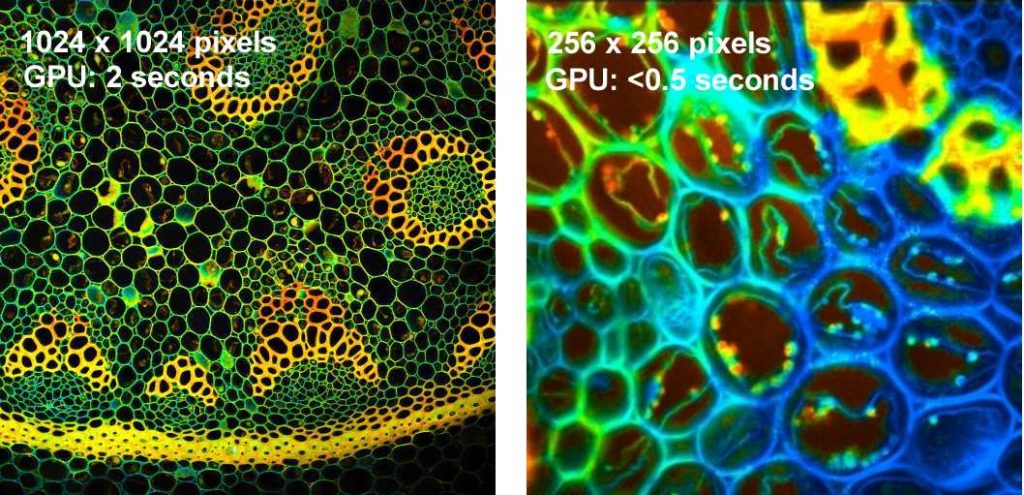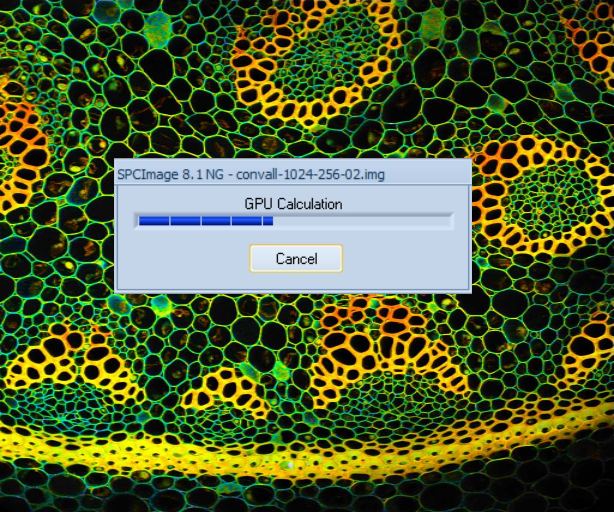Data produced by state-of-the art FLIM systems can contain an enormous number of pixels and time channels. Images with 1024 x 1024 or even 2048 x 2048 pixels are not uncommon, and time-channel numbers of 1024 are routinely used in combination with fast HPM-100-06 detectors. In terms of data size, such FLIM images are equivalent to a stack of 1024 one-megapixel images. Processing such amounts of data by the CPU of even a fast computer can take tens of minutes. SPCImage NG therefore uses GPU (Graphics Processor Unit) processing. The image data are transferred into the GPU, which then runs the de convolution and fit procedure for a large number of pixels in parallel. Data processing times are thus massively reduced. GPU processing is running an NVIDIA cards and a number of other NVIDIA-compatible devices. The figure below shows images recorded with 1024 x 1024 pixels and 1024 time channels (left) and with 256 x 256 pixels and 256 time channels (right). The processing times for triple-exponential decay analysis were:
| 1024 x 1024 image | 256 x 256 image | |
| Traditional WLS fit, CPU, multicore processing: | 16 minutes | 25 seconds |
| MLE fit, CPU, multicore processing: | 5 minutes | 10 seconds |
| MLE fit, NVIDIA GeForce MX230, on Lenovo laptop | 40 seconds | 2 seconds |
| MLE fit, NVIDIA GeForce GTX 1050 Ti | 8 seconds | 0.5 seconds |
| MLE Fit, NVIDIA GeForce RTX 2080 Ti 7.0 | 2 seconds | < 0.5 seconds |


